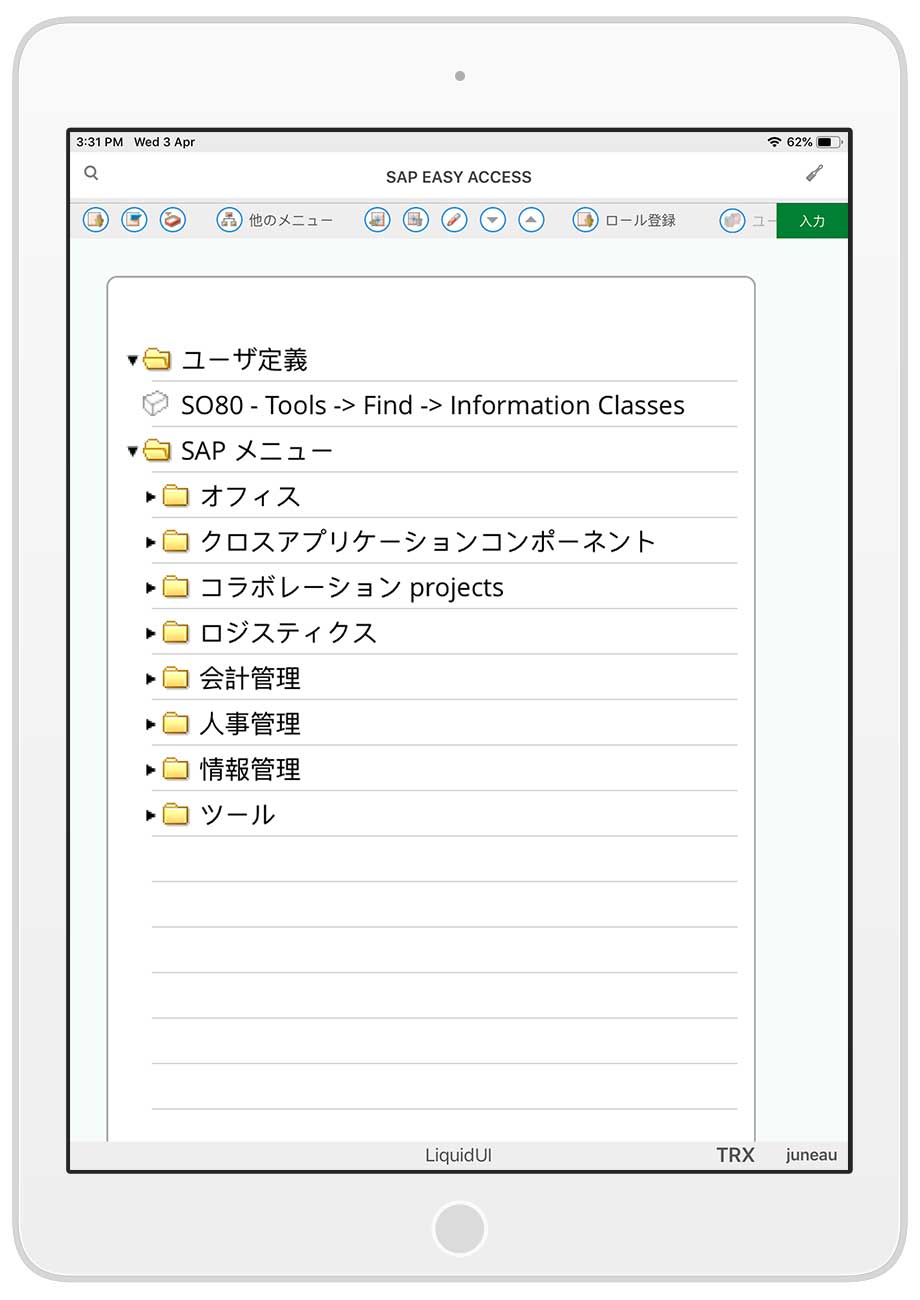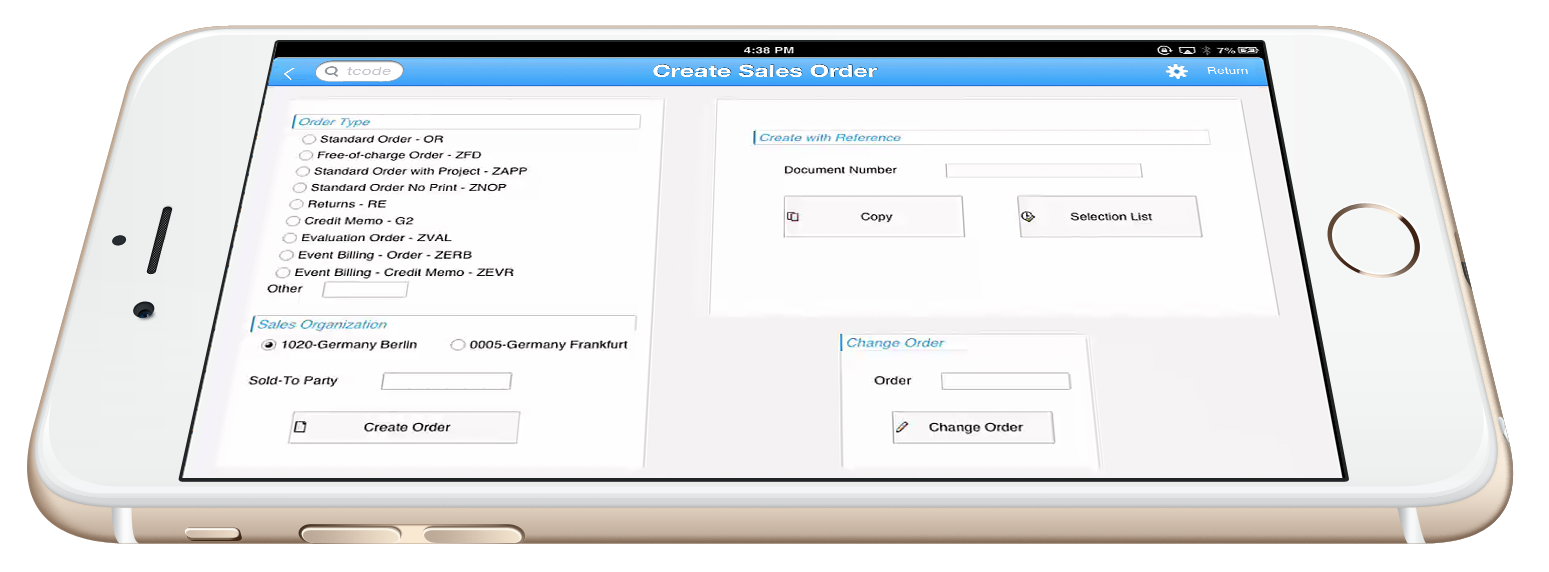

- #SAP GUI FOR IPAD FREE DOWNLOAD FOR ANDROID#
- #SAP GUI FOR IPAD FREE DOWNLOAD TRIAL#
- #SAP GUI FOR IPAD FREE DOWNLOAD OFFLINE#
- #SAP GUI FOR IPAD FREE DOWNLOAD DOWNLOAD#
- #SAP GUI FOR IPAD FREE DOWNLOAD WINDOWS#
#SAP GUI FOR IPAD FREE DOWNLOAD TRIAL#
You can also order a trial D4C system from the same link providing you access to the D4C system for a period of 30 days for free. D4C is available as of 1 user a month (23 EURO per user/month) and can be ordered from here. Like C4C is used as abbreviation for SAP Cloud for Customer, D4C will be used when referring to SAP Digital for Customer Engagement.

#SAP GUI FOR IPAD FREE DOWNLOAD OFFLINE#
Offline functionality is limited in the current release, however, there is an additional release planned in June 2015 with additional offline functionality.are not available (also not in in the Online version). Several “tabs” (SAP calls them “Facets”) on objects such as Customer, Opportunities, Quotes etc.Personalization and Adaptation UI (all personalization/adaptations done on the HTML5/Silverlight will be reflected in the new UI).Some functionality which is not available in the initial release of the responsive UI: Because eventually a switch to the new UI seems inevitable because at some point in time SAP will probably stop supporting the current ones. So make sure to keep well informed on the status of the new responsive UI and new Mobile/Tablet apps so you can make a decision on when to switch. Customer key users and administrators will be provided guidance regarding a potential switch to the “Responsive UI” with every release laying out what is doable and what limitations exist at that point in time with the new UI and they can evaluate whether they want to switch their business users to the new UI, as appropriate. SAP formulates it like this ( link):īusiness users at C4C customers should work with the HTML5 user interface for the time being. The current apps are more mature looking at available functionality so it makes sense to keep on using the current apps until the features of the new UI/apps are on the same or a higher level of maturity. The same approach is applicable for the mobile/tablet apps. Because eventually the Responsive UI will replace the HTML5 user interface (and probably also the Silverlight UI). So the advice is to keep on using the HTML5 user interface for the moment and to evaluate the Responsive UI after each new release. This seems a bit odd but this is because the Responsive UI in the current release lacks some of the features which are standard available in the HTML5 UI. For example, in the release documentation it’s not mentioned how you can start C4C in the Responsive UI.
#SAP GUI FOR IPAD FREE DOWNLOAD WINDOWS#
Windows tablet support is targeted for June 2015 and mobile phone support for august 2015.Īlthough the introduction of the Responsive UI is part of the 1505 release of C4C it does not get referenced much in the release documentation ( link).
#SAP GUI FOR IPAD FREE DOWNLOAD FOR ANDROID#
We’ve received information that also for Android tablets a new app should be released in May, but the new app does not yet seem to be available in the Google Play store. Link to the new apple iPad app is: link. It got released in the Apple Appstore as of May 23th.
#SAP GUI FOR IPAD FREE DOWNLOAD DOWNLOAD#
Just replace the xxxxxx with your tenant id and you can access C4C in the Fiori based user interface.Īpple iPad and Android tablets also support the responsive UI, you have to download a new app for it because the current apps will be supported by SAP on their current technical architecture. You have to slightly adjust the url of your C4C system to start it in the new responsive UI, use this link.

If you’re interested in Fiori and want to know more check out this link, this gives a good overview of the Fiori principles. So basically Fiori is SAP’s UI strategy and design principle which all products at SAP will adhere to including C4C. SAP has stated the intent to fully embrace the Fiori framework of design thinking, user centric design and associated technologies to power future user interaction for end users working with SAP SaaS offerings, services, products and solutions. The objective of SAP is clearly mentioned in this post: So why another user interface when you already have two? This seems like a fair question and we’re not the first one raising this, see this link.


 0 kommentar(er)
0 kommentar(er)
